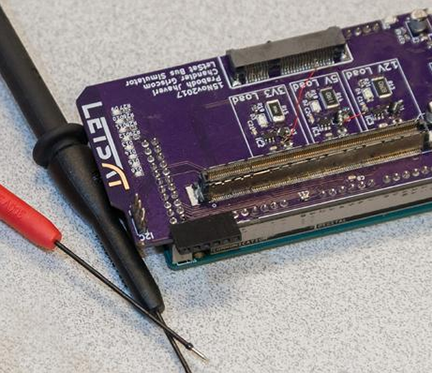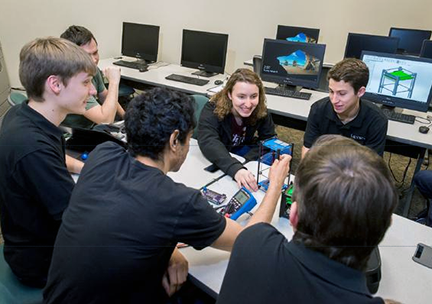
Ken Hedler posted a report at Longview-News Journal that focused in on 20 engineering students at LeTourneau University in Texas are boldly going where no one at the school has gone before: creating and launching a miniature satellite to orbit Earth.
Lichtenberg is a former astronaut who was a payload specialist at the Marshall Space Flight Center in Huntsville, Alabama, from 1978 to 1992. He said the idea for the project came a year ago from two students who took his class in spacecraft design and operations. He said Keener and Clifford White asked whether they could build a satellite.

The circuit board for a next-generation smart satellite build being designed by LeTourneau University.Photo is courtesy of Les Hassell/News-Journal.
"The overall objective is to give these students a real-world design project as opposed to an academic (one)," Lichtenberg said. "And hands on. The goal is to design, build and test."
Lichtenberg is a former astronaut who was a payload specialist at the Marshall Space Flight Center in Huntsville, Alabama, from 1978 to 1992. He said the idea for the project came a year ago from two students who took his class in spacecraft design and operations. He said Keener and Clifford White asked whether they could build a satellite.
"It seemed like an interesting project," said White, a senior who is chief engineer on the project. "The other projects we could do were not challenging enough."
The project is high risk because nobody has tried it before, he said. White said a successful launch of the nanosatellite might have value to commercial satellite companies seeking the technology, adding that a patent is in the works. However, the students have a ways to go, and they could be entering the workforce or pursuing graduate studies before the satellite is launched from a rocket.

LeTourneau University students discuss a next-generation smart satellite design they have been working on— photo is courtesy of Les Hassell/News-Journal.
The students designed a plastic mockup of the satellite — though it's only 4 inches by 4 inches by 8 inches, the smallsat has room for a computer, camera and solar panels. The final LetSat-1 will be made from aluminum.
The students and their professor displayed the mockup this past week in LeTourneau's Glaske Center while students in an adjoining computer lab worked on the satellite's design. They designed a website, are working on the computer software and plan to install the satellite tracking station with help from Radeus Labs to monitor and control LetSat-1 from atop the roof of the Glaske Center. The satellite dish will be 10 feet in diameter, White said.
To read the entire article, please access this direct infopage link...

